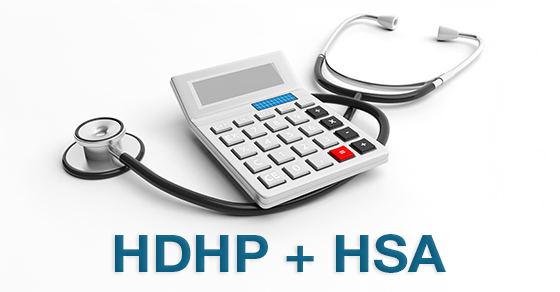
Is an HDHP Plus an HSA a Financially Smart Health Care Option for You?
Health care costs continue to increase. Pairing a high-deductible health plan (HDHP) with a Health Savings Account (HSA) can help. Insurance premiums will be lower because of the high deductible. And the HSA provides a tax-advantaged way to fund the deductible and other medical expenses.
5 HSA tax benefits
HSAs offer both current and future tax savings:
- Your contributions are pretax or tax deductible. This saves you tax in the year contributions are made.
- Contributions your employer makes aren’t included in your taxable income. Again, you save tax in the current year.
- Earnings on the HSA funds aren’t taxed as long as they remain in the account. HSAs can bear interest or be invested and grow on a tax-deferred basis, similar to a traditional IRA.
- Distributions to pay qualified medical expenses aren’t taxed. This means you benefit from permanent tax savings. (If funds are withdrawn from the HSA for other reasons, the distribution is taxable. Generally, a 20% penalty will also apply.)
- Distributions after age 65 are penalty-free even if not used for medical expenses. But they’re still taxable. So, HSAs can help fund retirement, again, similar to a traditional IRA.
Annual limits
You can contribute to an HSA only if you have an HDHP. For 2026, an HDHP is health insurance with an annual deductible of at least $1,700 for self-only coverage or $3,400 for family coverage. (These amounts increased from $1,650 and $3,300, respectively, for 2025.) Additionally, the 2026 out-of-pocket expenses you’re required to pay for covered benefits can’t exceed $8,500 for self-only coverage or $17,000 for family coverage (up from $8,300 and $16,600, respectively, for 2025).
Beginning in 2026, the definition of HDHP will be expanded. It also will include Bronze and Catastrophic plans available on state and federal insurance exchanges under the Affordable Care Act.
For self-only coverage, the 2026 HSA contribution limit is $4,400. For family coverage, it’s $8,750. (These amounts are up from $4,300 and $8,550, respectively, for 2025.) If you’re age 55 or older by year-end, you may make additional “catch-up” contributions of up to $1,000.
The annual contribution limit is reduced if you have an HDHP for only part of the year or go on Medicare at some point during the year. But you can still take tax-free distributions from your HSA for qualified medical expenses.
Determining your best option
The combination of an HDHP and an HSA can be financially smart, particularly for healthy individuals who don’t currently have many medical expenses. Such individuals can reduce premium costs today and potentially build up substantial HSA funds to use in the future, such as to cover the costs of a major health issue or to supplement their retirement plans. But an HDHP-HSA pairing isn’t the best option for everyone. Contact us to discuss the tax and financial aspects of funding your health care.
© 2025